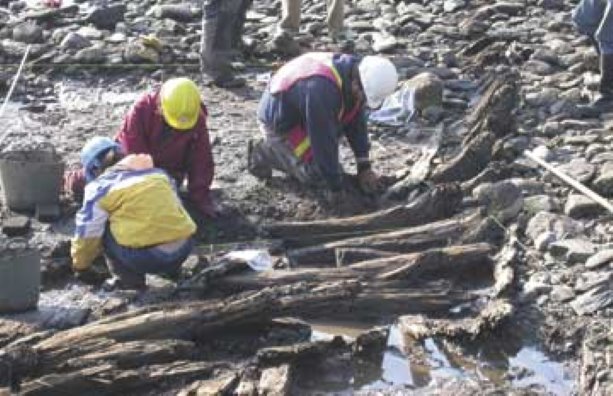After five years of project construction, the third of three sewage treatment plants completing The Halifax Harbour Solutions Project will become operational. The $333-million sewage treatment system, which serves the Regional Municipality of Halifax, consists of three separate plants.
After five years of project construction, the third of three sewage treatment plants completing The Halifax Harbour Solutions Project will become operational. The $333-million sewage treatment system, which serves the Regional Municipality of Halifax, consists of three separate plants.
The Halifax Wastewater Treatment Facility (WWTF) began operation in 2005, while the Dartmouth WWTF began operation in the summer of 2008 and is currently in the commissioning phase. The municipality is currently putting the finishing touches on the Herring Cove WWTF, the smallest of the three plants.
“The building is weather-tight and mechanical and electrical systems are presently being installed,” James Campbell, spokesman for Halifax Harbour Solutions said recently.
“The facility is scheduled to start accepting flows this summer.”
Prior to the construction of the system, raw sewage was ejected directly into Halifax Harbour.
The project has already paid dividends for the municipality. In 2008, after water quality had remarkably improved, local beaches were declared safe for swimming.
The system hit a setback in January, however, when an extended local power outage caused wastewater flooding damage to the Halifax facility.
“The Halifax WWTF was temporarily shut down and all wastewater previously routed through the Halifax WWTF is being screened through various combined sewer overflow chambers to remove ‘floatables’ and discharged into Halifax Harbour,” says Campbell.
The flooding in the plant was limited to the basement and wet-well areas and the equipment and systems in those areas that were exposed to wastewater will need to be either repaired or replaced, says Campbell. An extensive forensic investigation into the malfunction at the Halifax facility has not yet determined a cause.
“Fortunately for the Halifax WWTF, it’s in its second month of a three-year warranty period, and substantial insurance policies are in place,” says Campbell. “Restoration work is well underway. This effort began with an extensive clean up of the affected areas. This phase is now essentially complete and some systems have been returned to service. Of course, the primary goal for all involved is to quickly return the Halifax WWTF to operation and ensure another event doesn’t occur in the future.”
Campbell says that the construction of all three plants yielded a considerable haul of unusual artifacts dating back hundreds of years. These include the discovery of chamber pots, cannonballs and children’s toys.
“Whenever we would find something, work would stop and archeological crews would evaluate the artifacts,” says Campbell. “When this would occur, in conjunction with the Nova Scotia Museum, a determination would be made as to their importance before work could resume.”
The most surprising find? “While piping for the sewage collection system on the Dartmouth side of the harbour was being laid down, one of the unique artifacts uncovered was the wreckage of a circa 1813 British barque, a three-masted sailing ship,” says Campbell. Historic shipwrecks in Halifax Harbour are protected by Nova Scotia’s Special Places Act, which makes it illegal to remove the artifacts without a permit.
“The museum folks took the historically relevant pieces back to the museum so we could resume construction,” says Campbell.

The remains of a historic ship were uncovered during work on the Dartmouth side of the harbour.











Recent Comments
comments for this post are closed